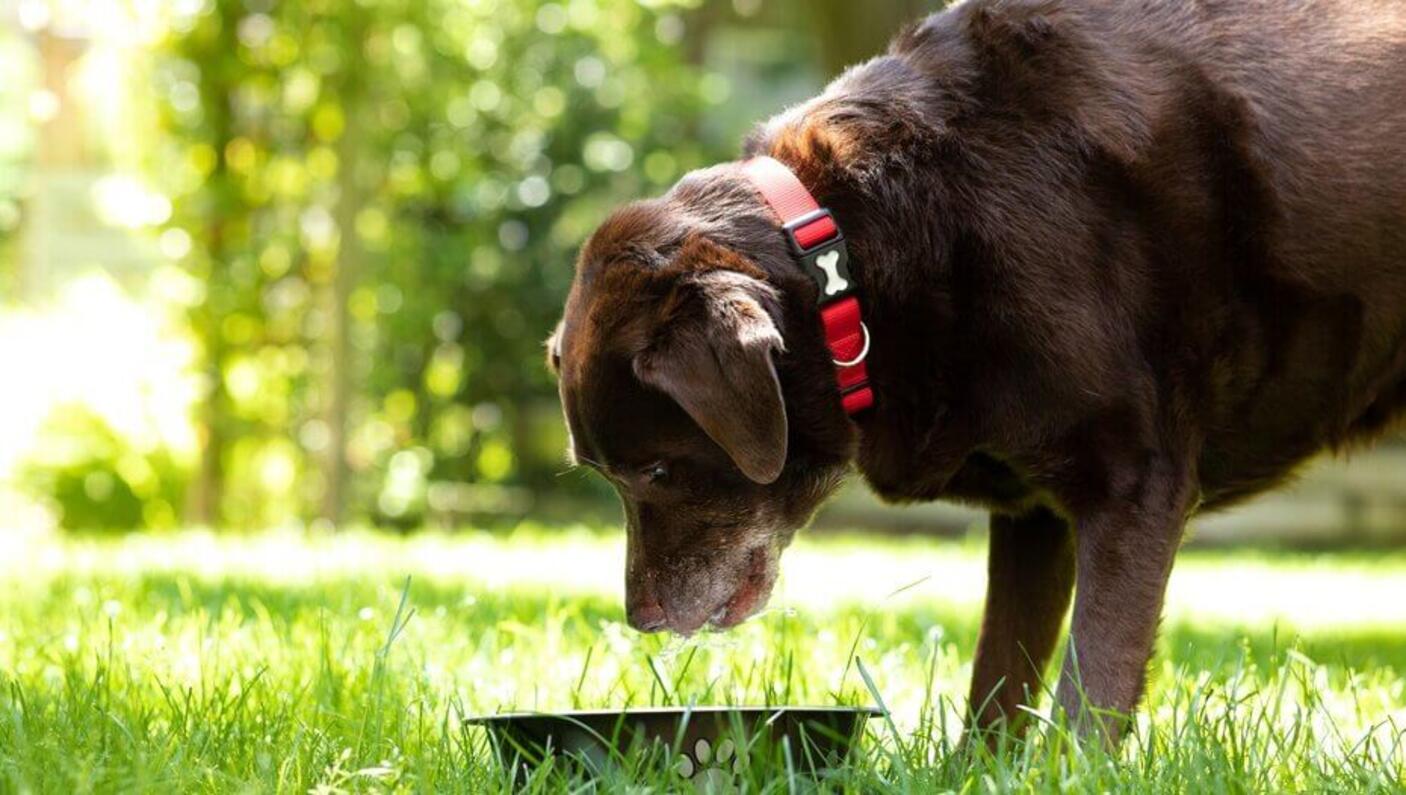
Heat Stroke in Dogs: How to Recognise the Symptoms and Act Swiftly
Your dog loves spending the summer with you – there’s so much opportunity to go outside, explore and play. However, should the weather be particularly warm, it’s sensible to consider heat stroke in dogs and the effect the sun might have on your friend.
Heat stroke in dogs can occur if they are without shade, ventilation or water, and as with humans, it can be dangerous for their health. It can also occur when they’re out and about with you, for example after vigorous exercise in warm weather, or following stress or overexcitement.
What is heat stroke in dogs?
Heat stroke or heat exhaustion in dogs refers to a high body temperature that is not caused by underlying illnesses but rather by excessive exposure to environmental factors, mainly hot temperatures. Heat stroke occurs because the dog’s body is unable to bring the temperature down to normal levels through panting alone.
Factors that increase heat stroke in dogs
Of course you want to avoid any risk of heat stroke, but what should you look out for to keep your dog healthy and happy during the summer months? Factors that can increase the risk of developing heat stroke in dogs include:
- Lack of water.
- Enclosed space.
- Excessive humidity.
- Obesity.
- Intense exercise.
- Old age.
- Cardiovascular disease or respiratory disease.
- Lack of acclimatisation.
What dog breeds have a higher risk of developing heat stroke?
Short-faced dog breeds, such as Boxers, Bulldogs, Pugs and Pekingese, and dogs with heavy coats (such as Huskies or Newfoundlands), are at particular risk of heat stroke. But all types of dogs can suffer from heat exhaustion if the conditions are right.
Signs of heat stroke in dogs
No matter how carefully you care for your dog, it’s always possible that something unexpected can happen. Here are some signs of heat stroke in dogs to look out for just in case:
- Severe panting.
- Difficulty breathing (particularly if your dog already has any respiratory problems).
- Severe salivating.
- Vomiting.
- Diarrhoea.
- Raised temperature (40.5° C or above).
- Blood in his urine.
- Nose bleeds (and other bleeding problems).
- Ultimately, collapse and coma.

Avoiding heat stroke in dogs
If it’s hot outside, don’t worry – there’s plenty you can do to ensure your dog stays healthy during the summer months.
An easy way to maintain a cool, comfortable environment for your dog is to provide plenty of shade and fresh water to help keep them hydrated throughout the summer. If your dog joins you on a journey, remember to take water and a towel. A wet towel is an easy, effective and enjoyable way for your dog to cool down and helps you avoid an episode of dog heat exhaustion. To make it even easier for your dog, avoid travelling during the hottest times of the day – that way you’ll both rest easy.
If you’re looking forward to the summer months so you can start travelling with your dog, be aware that confinement to a car or any other poorly ventilated enclosure, no matter your best intentions, can be fatal to dogs, as cars get hot very quickly. For this reason it is very important to never leave your dog in the car, even if it seems safe at the time, as the heat and airlessness can cause dog heat stroke – and it might leave to prosecution in some countries.
When the outside temperature is 26ºC /78ºF, the inside of a car will reach 32ºC /90ºF in five minutes, and 43ºC /110ºF in 25 minutes! This means that even a few minutes can be too much – the easiest thing to do is avoid taking your dog in a hot car, giving you less to worry about.
Your dog may find exercising during hot days or warm, humid nights a bit too much, so avoid the hottest times of the day. The best time for them to enjoy some fun dog exercise is either in the morning (especially if you’re both early birds), or in the evening for night owls.
If your dog is lucky enough to have a lovely thick, heavy coat, they’ll be particularly happy not going out in the middle of the day. But no matter what coat your dog has, it’s best to avoid vigorous exercise in hot weather, as your friend could develop dog heat stroke in as little as 30 minutes.
To help keep your dog cool, don’t leave them in direct sunlight outside; they’ll be much happier in the shade. As well as this, although going out is fun for you and your dog, reconsider visiting busy, outdoor events on hot summer days.
Treating heat stroke in dogs
If you think your dog has heatstroke, don’t panic – the best thing you can do is to act calmly and swiftly. Follow these steps, and hopefully he will soon be back on his paws!
- Remove your dog from the heat and take into a cool or shady area, or air conditioning, to help cool him down.
- Spray or sponge your dog's body with cool (but not cold) water, making sure the water contacts their skin and doesn’t just run off their coat. Thoroughly wet their belly and inside their legs.
- Using a fan is another good way to reduce your dog’s temperature.
- Do not plunge your dog into cold water or an ice bath, as this actually prevents their core (central) temperature going down.
- Gently massage their legs and body to improve the circulation to their outside. Just bear in mind that as animals with heatstroke can bruise easily, it’s best to exercise caution.
- If their temperature returns to 39.4°C, stop the cooling process to ensure you don’t chill your dog as this can lead to hypothermia.
- Gently dry your dog with a towel. If they are conscious, give them small amounts of water to improve their hydration.
Most importantly, you should seek veterinary attention as soon as possible, as heat stroke in dogs can be fatal - go straight to the nearest vet for assistance. In the event of heat stroke, your vet is the very best person to help you.
With all that in mind, heat stroke in dogs is very serious, but it is also easily avoided. With the proper care and attention, your dog will remain healthy and happy, and most of all enjoy a great and problem-free summer with you!
Next, discover some of the more unusual signs of illness in dogs to watch out for.












